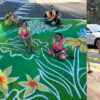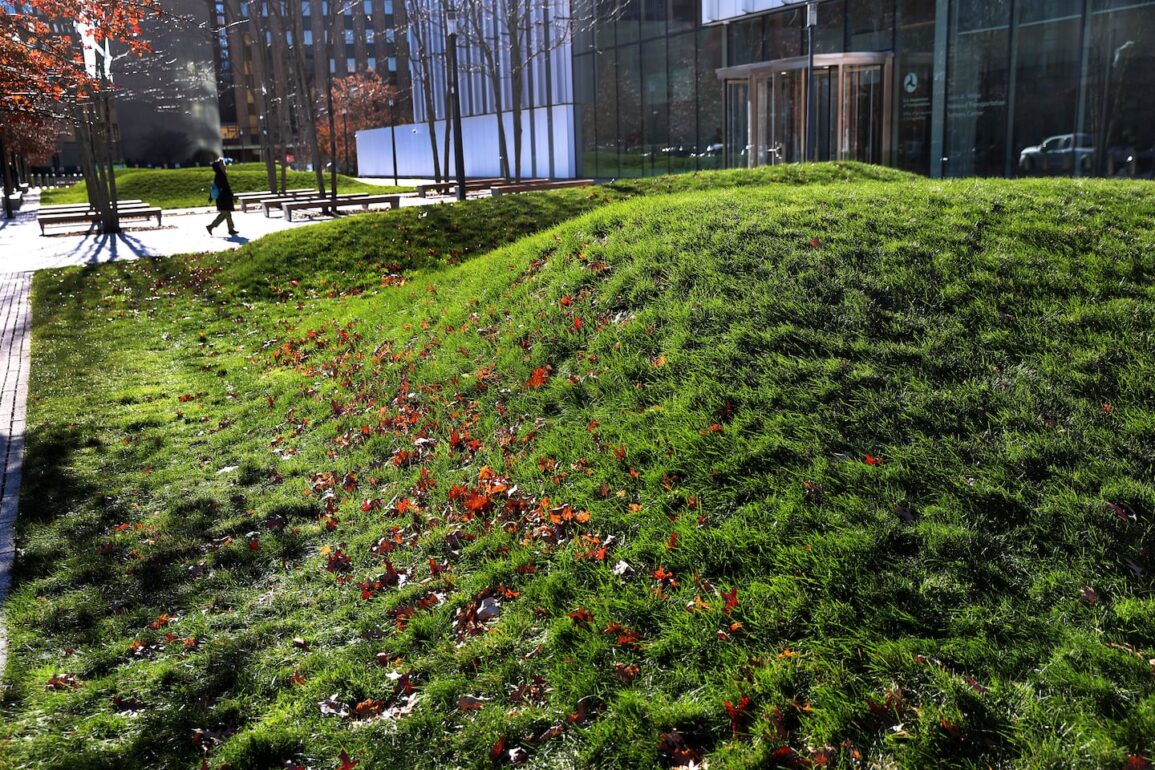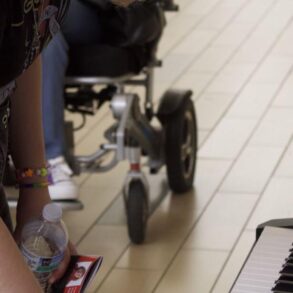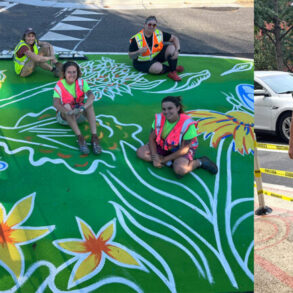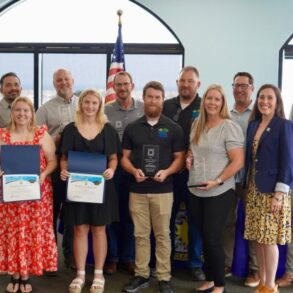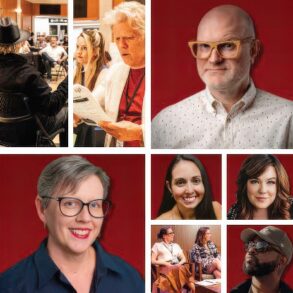What if someone spent $1.3 million on a work of art, installed it in one of the busiest parts of Cambridge, and forgot to tell anyone?
That’s effectively what happened with a piece called “The Sound we Travel at,” by the New York City artist Maya Lin. She is best known for works like the Vietnam Veterans Memorial in Washington, D.C., and the Civil Rights Memorial in Montgomery, Ala. (Lin also designed part of the Novartis campus in Cambridge, including a blocky, Swiss-cheese-like building near MIT.)
But she also makes works of landscape art — one is installed at the Storm King sculpture park in New York — and that’s what was created in Kendall in 2023. You can find it on Binney Street as you head toward Boston, to the left of a new 13-story building that houses the Volpe National Transportation Systems Center, a research center run by the US Department of Transportation. Sandwiched between a row of trees and lampposts is a series of 11 grass-covered, wave-like mounds of earth.
Apropos of the Volpe Center’s work — which focuses on making shipping, rail transport, and driving safer and less environmentally damaging — the artwork outside is a physical representation of the Doppler effect. You know: the phenomenon of a sound, like a train’s horn, changing in pitch as it races past you. Some of the rippling mounds in Lin’s work represent sound waves that are approaching the viewer, and some of them represent sound waves that are receding from the viewer. Visitors are invited to walk atop, or even sit on, the work.
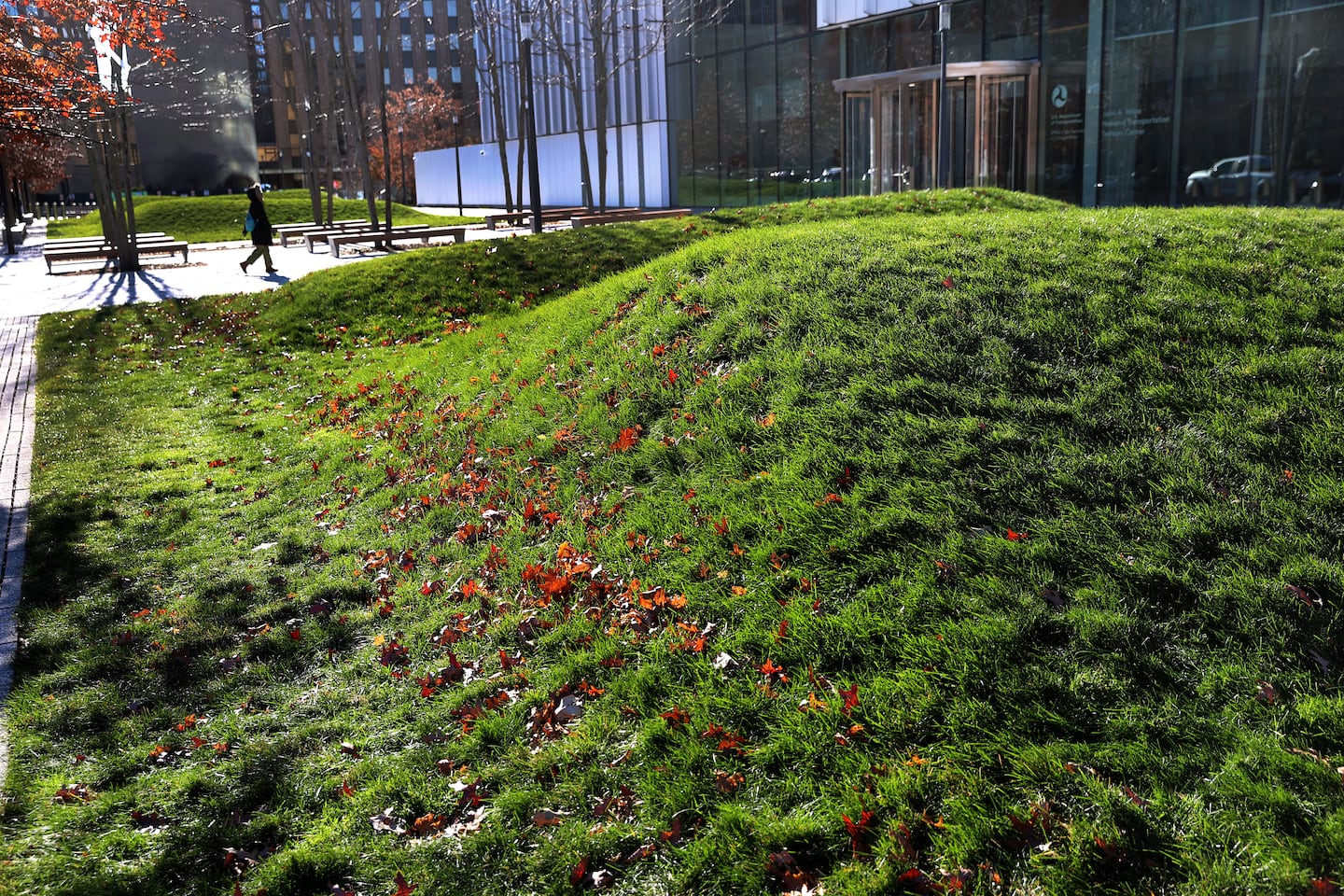
There’s so much construction work in Kendall Square right now that I only noticed the artwork in November 2023, when I was visiting the Volpe Center to write a piece (it’s right outside the center’s main entrance.) A year later, I noticed that there’s still no sign, and it doesn’t appear on the website of either the Volpe Center or the Maya Lin Studio. I couldn’t find a single museum curator or former curator in town who knew about it.
Dabney Hailey, who has worked at the Wellesley and Brandeis art museums, and teaches art-related courses, says that while she lives in Cambridge, she wasn’t aware of the piece: “I’m really, really excited to see it.”
That seemed odd, given that it’s the first of Lin’s landscape pieces to be built in Massachusetts.
The artwork is part of a 14-acre site that MIT’s real estate management arm acquired from the federal government in 2017, and is redeveloping to include housing, retail, office space, parks, and a new community center. Part of that deal involved MIT building a newer home for the Volpe Center, and any time a new federal building goes up, half of one percent of the building’s cost goes to art. (That’s even true when MIT is footing the construction bill, as it was in this case.)
Paul Ha, the director of MIT’s List Visual Arts Center, helped make the connection to Lin for the project. He was one of the few people in the local art world I could find that was aware of its existence. Ha had worked with Lin on a major exhibit when he was running the Contemporary Art Museum in St. Louis.
I asked him about the significance of this particular work. “Besides the general argument for the benefit of having public art on view for everyone that passes by, if the viewer is curious as to the unusual grass field, they will find out that the artist took something that was abstract — a sound wave — and made it into something physical and relatable,” Ha wrote via email.
Aprile Gallant of the Smith College Museum of Art says, “I do believe this is Lin’s first landscape piece in Massachusetts, so it is a milestone.” That museum hosted a major exhibit of Lin’s works in 2022, when a library that she’d designed opened on campus.
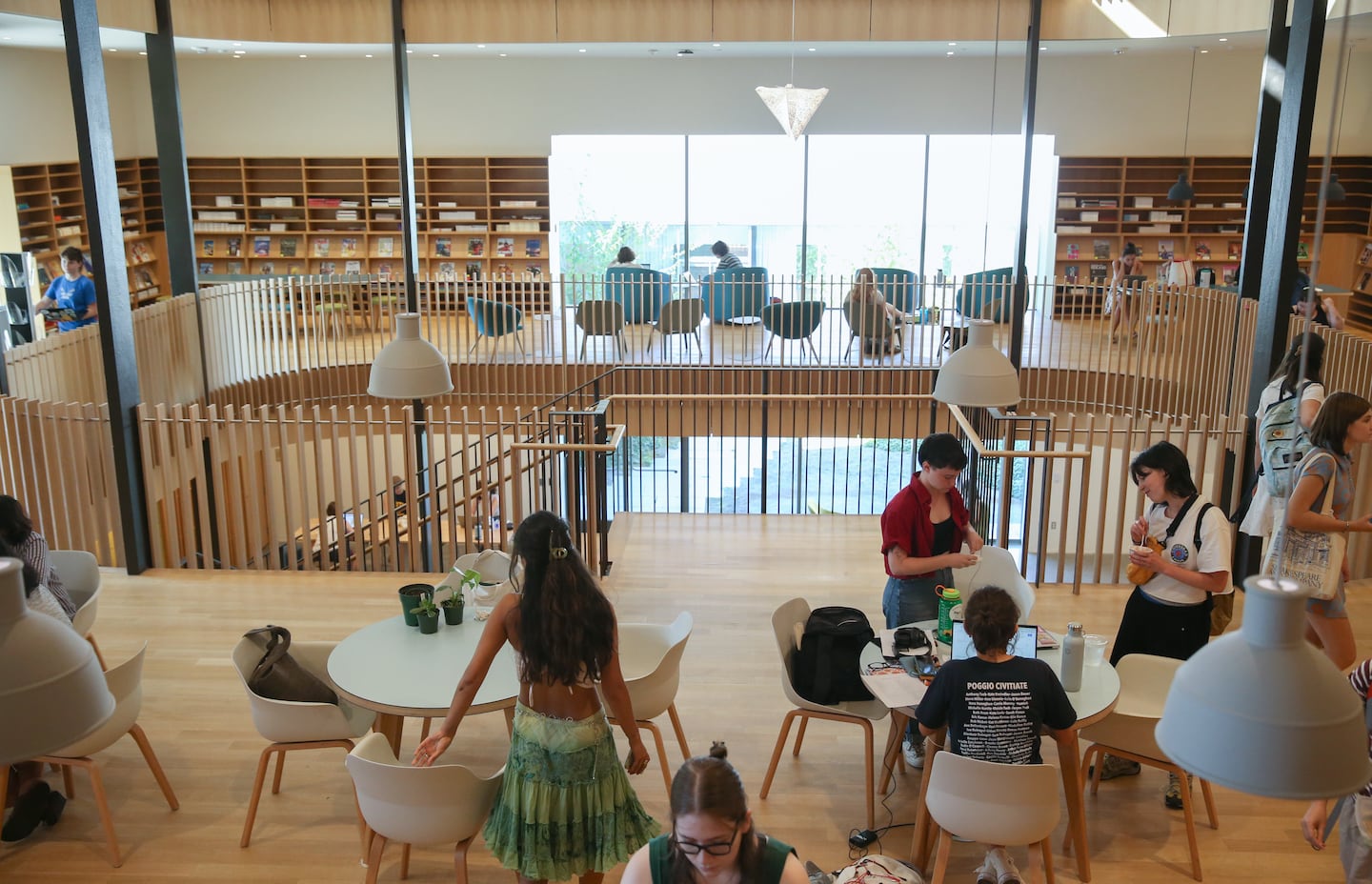
The Volpe Center had never been a particularly vibrant part of Kendall Square — its 1960s-vintage beige buildings were surrounded by parking lots and manicured lawns — so I’m all for introducing public art. And the Maya Lin piece feels like the start of the second wave of transformation: The neighborhood has long had an independent cinema, the Landmark Kendall Square, but otherwise hasn’t been a cultural hub or nighttime destination. Coming in 2026: the 585 Arts Center, which will include a new 300-seat theater, along with outdoor performance space.
Did “The Sound we Travel at” fall through the cracks, in a neighborhood peppered with cranes and construction fencing, and tech and biotech workers who go from garages to offices perhaps two or three days a week?
“We felt that way,” says James Ewart, manager of the Maya Lin Studio.
But according to the government’s General Services Administration, by the time spring rolls around, a sign will finally be installed next to the artwork.
Scott Kirsner can be reached at kirsner@pobox.com. Follow him @ScottKirsner.
This post was originally published on this site be sure to check out more of their content


